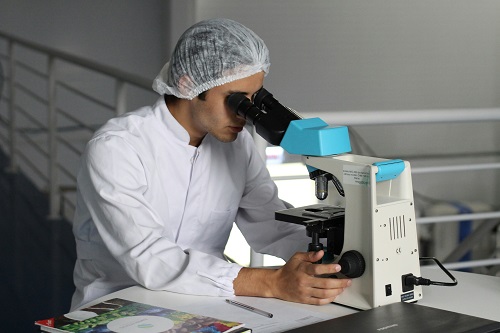Introduction
Sugars are an essential component of our diet and play a crucial role in various biological processes. They are not only a source of energy but also serve as building blocks for more complex molecules. Disaccharides, in particular, are formed by the combination of two monosaccharide units through a process called disaccharide synthesis. In this blog post, we will explore the fascinating world of disaccharide synthesis, its importance, and the various mechanisms involved.
Understanding Disaccharides
Before diving into the synthesis of disaccharides, let’s first understand what they are. Disaccharides are carbohydrates composed of two monosaccharide units joined together by a glycosidic bond. Monosaccharides, on the other hand, are simple sugars that cannot be further hydrolyzed into smaller units. Examples of common disaccharides include sucrose, lactose, and maltose.
Importance of Disaccharides
Disaccharides serve several important functions in living organisms. They are a major source of energy, providing fuel for various metabolic processes. For example, sucrose, commonly known as table sugar, is broken down into glucose and fructose during digestion, which are then used by cells to produce ATP, the energy currency of the body.
Disaccharides also play a crucial role in cell signaling and recognition. They are often found on the surface of cells as part of glycoproteins and glycolipids, which are involved in cell-cell communication and immune response. For instance, lactose, found in milk, acts as a recognition molecule for the attachment of bacteria to the intestinal wall.
Mechanisms of Disaccharide Synthesis
Disaccharide synthesis involves the formation of a glycosidic bond between two monosaccharide units. There are two main mechanisms by which disaccharides can be synthesized: condensation and glycosylation.
Disaccharides play important roles in mediating biological processes, food sweeteners, and the healthcare products field. The interest of scientists in disaccharide synthesis has greatly increased. Disaccharides are glycosides produced by condensation and dehydration of hydroxyl groups on two identical or different monosaccharides. Sucrose, maltose, and lactose are three common disaccharides. Glycosidic bonds can be formed between any hydroxyl groups on the component monosaccharides. Therefore, even if two sugars have the same composition (e.g., glucose), different bond combinations (regiochemistry) and stereochemistry (α- or β-) can result in disaccharides as diastereoisomers with different physical and chemical properties. Therefore, the custom synthesis of disaccharides with complex structures is important for studying their functions in the fields of cosmetics, biotechnology, pharmaceuticals, and food production.
Condensation
Condensation is the most common mechanism of disaccharide synthesis. It involves the removal of a water molecule (dehydration) from two monosaccharide units, resulting in the formation of a glycosidic bond. This process requires the presence of an enzyme called glycosyltransferase, which catalyzes the reaction.
For example, sucrose is synthesized from glucose and fructose through condensation. The glycosyltransferase enzyme removes a water molecule from the hydroxyl groups of glucose and fructose, forming a glycosidic bond between them.
Glycosylation
Glycosylation is another mechanism of disaccharide synthesis, which involves the transfer of a monosaccharide unit from a donor molecule to an acceptor molecule. This process is catalyzed by enzymes called glycosyltransferases.
An example of glycosylation is the synthesis of lactose from glucose and galactose. The enzyme lactose synthase transfers a galactose unit from UDP-galactose (the donor molecule) to glucose (the acceptor molecule), forming a glycosidic bond between them.
Disorders of Lipid Glycosylation
Congenital disorders of glycosylation (CDGs) affects multiple tissues and organs in the body. CDG involves any part of the body and almost always has an important nervous system component. CDG can be associated with a variety of adverse symptoms, ranging from mild to severe, and even disabling or life-threatening. CD BioGlyco provides comprehensive and deep insights into disorders of lipid glycosylation. We offer advanced analysis services, including but not limited to Phosphosphingolipid Analysis, Ganglioside Analysis, and Sulfoglycosphingolipid Analysis.
The ST3GAL5 gene encodes sialyltransferase, also known as GM3 synthase, a glycosylphospholipid (sialyl-lactoylceramide) that is enriched in neural tissue. GM3 is a substrate for further reactions that produce the major complex gangliosides in neural tissue. Gangliosides promote neuronal function by indirectly regulating a variety of cell signaling activities through direct interaction with carbohydrate-binding proteins and through differentiation into specialized membrane domains.
Regulation of Disaccharide Synthesis
The synthesis of disaccharides is tightly regulated in living organisms. The activity of glycosyltransferase enzymes, which catalyze the formation of glycosidic bonds, is regulated by various factors, including gene expression, post-translational modifications, and allosteric regulation.
For example, the expression of the lactose synthase gene is regulated by lactose itself. When lactose levels are low, a repressor protein binds to the lactose synthase gene, preventing its expression. However, when lactose levels increase, lactose binds to the repressor protein, causing it to dissociate from the gene and allowing lactose synthase to be expressed.
Applications of Disaccharide Synthesis
The understanding of disaccharide synthesis has significant implications in various fields, including food science, medicine, and biotechnology.
In food science, the synthesis of disaccharides is important for the production of sweeteners and flavor enhancers. For example, the synthesis of high-fructose corn syrup involves the enzymatic conversion of glucose to fructose, resulting in a sweeter product.
In medicine, disaccharide synthesis plays a role in the development of drugs and therapies. For instance, the synthesis of glycosaminoglycans, a type of disaccharide found in the extracellular matrix, is crucial for tissue engineering and regenerative medicine.
In biotechnology, disaccharide synthesis is used for the production of biofuels and biopolymers. By engineering microorganisms to produce specific glycosyltransferase enzymes, researchers can create novel disaccharides with desired properties.
Conclusion
Disaccharide synthesis is a fascinating process that plays a crucial role in various biological processes. Understanding the mechanisms involved in disaccharide synthesis not only enhances our knowledge of carbohydrate metabolism but also opens up new possibilities for applications in food science, medicine, and biotechnology. By unraveling the secrets of disaccharide synthesis, scientists are paving the way for advancements in fields ranging from drug development to renewable energy.
Source from CD BioGlyco
CD BioGlyco is a sub-brand of CD Bio Group. We offer a full range of glycobiology-related products, analysis, custom synthesis, and design to advance your glycobiology research. We have provided professional and reliable scientific research assistance to customers from all over the world and received a lot of appreciation.
Quality and efficiency are our criteria to evaluate ourselves. Our experienced scientists provide quality services using a large number of advanced instruments. We do not subcontract services in order to guarantee high-quality standards.



